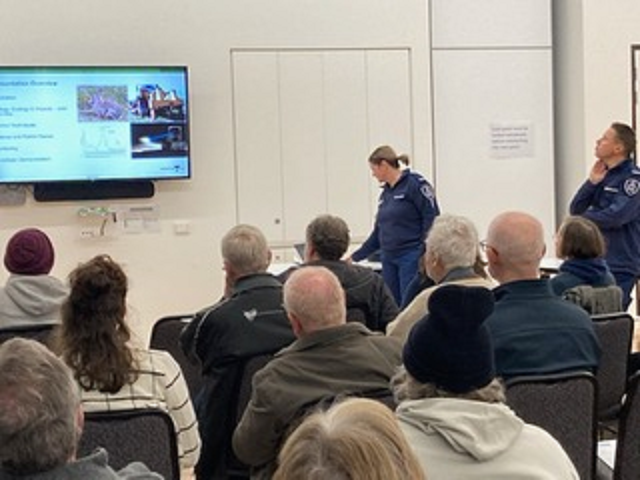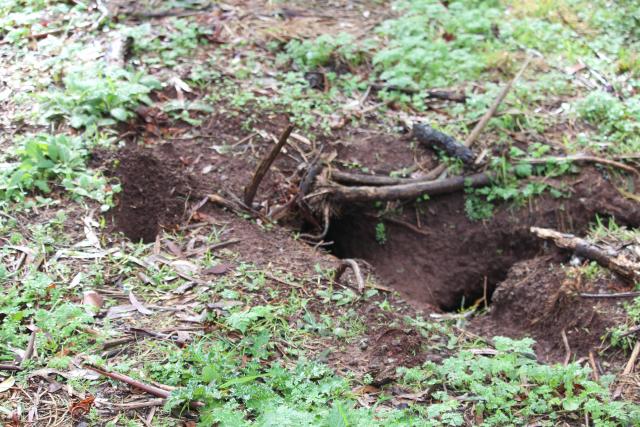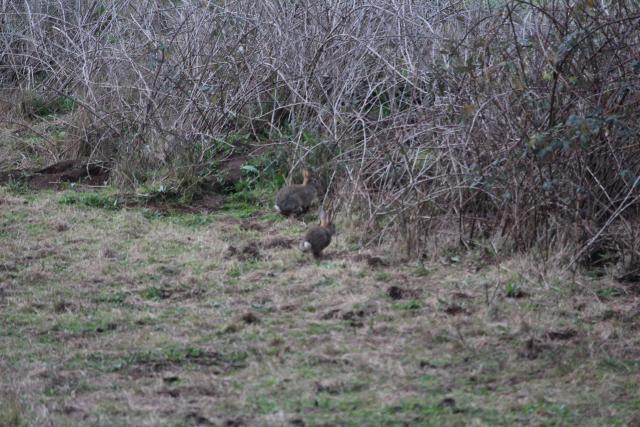The feral rabbit population in Emerald was a hot topic of conversation at the Hills Hub on Wednesday 22 June in a meeting organised by the Emerald feral rabbit group with help from the Emerald Village Association.
Leading Biosecurity Officer for Invasives, Annie Lamb, was a guest speaker at the event and shared her expertise on various methods of rabbit population control.
Founder of the feral rabbit group and local resident, Yvette Hayes, said there were between 30 and 40 attendees engaged on the night.
“[Rabbits] are burrowing under houses and in gardens at the moment…there [was] a gentleman that mentioned it was going to cost him a substantial amount of money (almost $12,000) to replace a retaining wall from damage they had done,” Yvette said.
“They’re scratching up gardens, they’re eating things people don’t want them to eat, and burrowing…if you’re on acreage and [using] a ride-on lawnmower, the ground where they have burrowed is quite bumpy and challenging.”
According to Agriculture Victoria, an estimated $200 million in lost production is caused by European rabbits every year.
Even low numbers of the species, according to the department, can have a devastating effect on tree-planting programs or intensive horticultural operations, cause damage to grain crops and lead to significantly reduced crop yields in some areas.
“Often in areas where you’ve got really high rabbit numbers… native grasses are all gone, all the trees and shrubs, they chew the bark off the bottom of them so they ring bark native species,” Leading Biosecurity Officer Annie Lamb said.
“If there’s no grass around to eat, they will eat trees and shrubsl so they will chew through any of the little shoots that come up off the trunk, they’ll eat those down as well and eventually kill the plants,” Annie said.
“If you’ve got things like cattle, stock, sheep [or] horses in a paddock and you’ve got warrens, there is the risk of the animals stepping in the warrens and breaking legs or injuring themselves.”
It is believed the European rabbit is most prevalent in non-arable environments including creeks, riverbanks, erosion gullies and rocky outcrops.
Annie Lamb said there are no rabbit monitoring programs active in the Dandenong Ranges, but there is an app called ‘Feral Scan’ run by the Invasives Animals Cooperative Research Centre locals can download on their smartphone or tablet which displays the numbers (still absent for the Emerald locality).
“I think everyone – once they had a look at that – was pretty keen to start using it and start putting some data into that so we can get some idea of the rabbit numbers and fluctuation over the years,” Annie said.
For Yvette Hayes, who created the Emerald feral rabbit group through Facebook in October 2021, the next few months before Summer marks an important time to prepare for a community-led population control effort.
“We can use very targeted measures as advised by the Department of Agriculture. These include biological [control] for very small areas, baiting which must be done by someone with an ACUP certificate, and can be used in open areas as long as there is no risk of harming native environments, native animals or domestic animals,” she said.
“Then there’s fumigation where you have to have a registered person fumigate the burrows, this is used around waterways and sensitive areas, and finally we have ripping of the warrens, but they all have to happen around that February, March, April period and it has to be a neighbourhood effort.”
To learn more about rabbit management, visit https://agriculture.vic.gov.au/biosecurity/pest-animals/invasive-animal-management/integrated-rabbit-control









